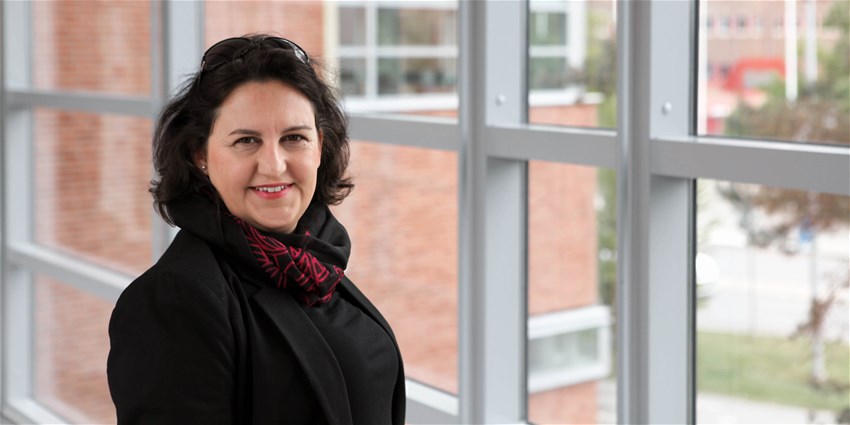Challenges in integrating programming into mathematics education
08 Feb 2024
How did Swedish upper secondary mathematics teachers navigate the challenges that arose when programming was to be integrated into mathematics education? Ana Fuentes at University West delves into this question, presenting her findings in a new thesis. She explores the development of the programming reform and how teachers dealt with obstacles and contradictions arising from changes to the curriculum.

In 2018, the Swedish National Agency for Education revised the mathematics curriculum, including programming in mathematics education to promote digital competence, assuming digitalization as crucial for equitable education. However, implementation was far from straightforward, and challenges arose promptly. Ana Fuentes, doctoral student in informatics with a focus on Work integrated learning, sheds light on these issues in her thesis “Practice beyond technology when programming and mathematics teaching converge.
She identified numerous uncertainties surrounding the reform, highlighting the vagueness of the programming inclusion in the curriculum. Questions regarding the extent, specific programming components, and programming languages remained unanswered.
Focusing on teacher learning
Ana's background in computer science and experience as a high school teacher in programming and mathematics proved to be helpful, as was her collaboration with the Swedish National Agency for Education during the 2018 curriculum reform. Both provided insights into the challenges faced by Swedish mathematics teachers. The thesis explores teachers' experiences in integrating programming, drawing from extensive documentation of official reform strategies and interviews with teachers and National exam developers.
– The thesis focuses on the teacher's learning in programming, specifically how teachers prepare themselves and adapt their teaching. In line with University West profile on Work Integrated learning, I have focused on the teachers rather than the students programming development.
A study by the Swedish Teachers' Union during this period indicated that seven out of ten mathematics teachers felt uncertain about programming and worried about integrating it into their teaching. In 2021, the curriculum underwent further revisions, interpreted by some as an acknowledgment of the challenges and stress within the mathematics teaching community.
– Many teachers felt anxious, which was not surprising. The teaching staff simply weren't prepared, Ana explains.
Despite the vague framework, the 2021 revisions lowered requirements for programming in the initial courses. Ana emphasizes challenges beyond vague guidelines, such as teachers' lack of programming training or perceived inadequacy of received training. Additionally, the crowded nature of mathematics courses and the absence of programming components in National Exams led some teachers to deprioritize programming in an already tight curriculum.
Several challenges – and significant potential
Ana's thesis underscores the evolution of the Swedish National Agency for Education's strategies over the years. She highlights the potential for long-term positive societal effects if implementation frustrations are addressed.
– Clearer guidelines and teacher training are identified as crucial for successful programming integration into mathematics. But programming has a place in mathematics education, and in my thesis I reveal two tactical approaches teachers have taken: dual teaching and interspersed programming, Ana says.
Both approaches prioritize didactics over technology, in dual teaching programming is introduced as a separate track, often due to students' lack of prerequisites. With interspersed programming the teacher incorporates programming into mathematics education where appropriate, with mathematics progression guiding the integration.
Ana Fuentes explains that there are other good examples to look to. In Norway, programming is included in the National Exams. This has provided a measure of expectations, something that has proven to yield positive results.
– For the reform to take hold, programming needs to be part of the national exams. But there is also a need for clearer guidelines and teacher training. In this similar project in Norway that I have been involved in, we see a completely different effect. They include programming in the National Exams and have an extensive number of teachers in training every semester, says Ana, who now looks forward to returning to teaching in mathematics teacher education.
While her doctoral studies are coming to an end, Ana's interest in the intersection of mathematics and programming in education is far from over.
The thesis: Practice beyond technology when programming and mathematics teaching converge
Contact: Ana Fuentes, Doctor in Work Integrated Learning with specialisation in Informatics, University West, ana.fuentes-martinez@hv.se, +46 701-80 47 00


